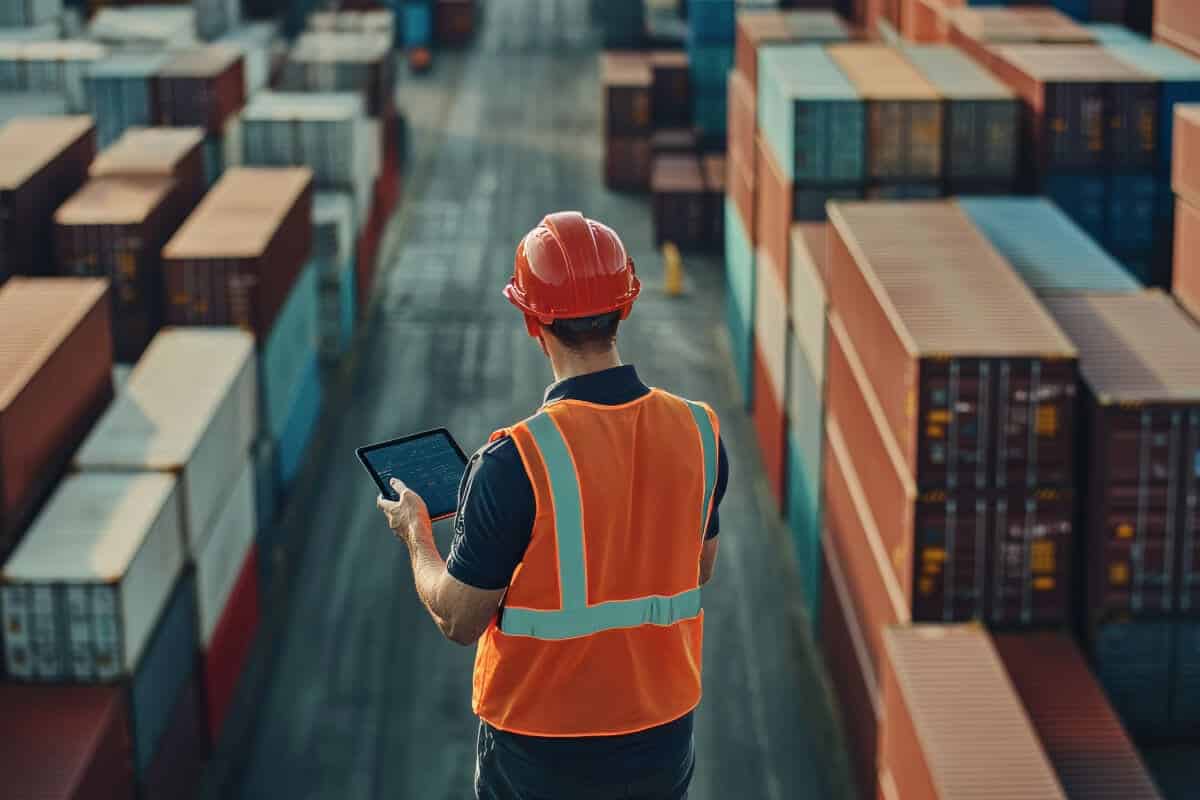The intricate web of global supply chain management is the lifeline of today’s economy, seamlessly bridging the gap between production and consumption across international borders. With an ever-evolving landscape, businesses face many challenges ranging from unpredictable disruptions to maintaining regulatory compliance while integrating advanced technologies.
From the urgency of crafting disruption-proof strategies to harnessing the power of data analytics, the complexities of supply chain design demand a blend of foresight, adaptability, and strategic acumen. This essay explores the multifaceted issues in global supply chain management, their implications for businesses, and the innovative solutions paving the way toward a more efficient and resilient future.
Table of Contents
- Disruptions and Risk Management
- Regulatory Compliance and Trade Complexities
- Technological Integration and Data Analytics
- Sustainability and Ethical Practices
- Cost Efficiency and Optimization
- Related Content
Disruptions and Risk Management
Navigating the Choppy Waters of Supply Chain Management: Strategies to Weather Any Storm
In the dynamic business world, where adaptability is synonymous with survival, supply chain management is critical in ensuring operations run as smoothly as the finest Swiss timepiece. As an entrepreneur with fingertips perpetually on the pulse of market trends and a network as vast as the sky, let’s steer through the strategies savvy business leaders should deploy to mitigate risks and manage the inevitable disruptions that could ripple through their supply chain.
The backbone of any resilient supply chain lies in its ability to preempt upheaval and adapt vigorously. A multi-pronged approach includes diversifying suppliers to avoid being caught in the quicksand of dependence on a single source. Expand horizons beyond the local and national; global sourcing isn’t just a trend—it’s a tactical advantage, offering not just competitive pricing but also reliability during regional disturbances.
In the age of big data, harnessing its power is not a luxury but a necessity. Invest in technology that synthesizes information from every cog in the supply chain wheel. With advanced predictive analytics, businesses can anticipate turbulence before it happens. Imagine the prowess of being able to reroute shipments instantaneously in response to a dockworker strike on the other side of the world—this is the power at play.
Risk is an omnipresent shadow in the business world. Combat this by establishing robust contingency plans. It’s like always having an umbrella, providing cover when the forecast misses an unexpected squall. Create scenario-based strategies and test them. A simulated disruption is better than a real one catching a business flat-footed.
Transparency is the watchword for modern supply chain management. Building strong supplier relationships is less about the transaction and more about creating partnerships. With transparency comes trust; when a problem arises, a business is more likely to be at the top of the supplier’s priority list rather than an afterthought.
Lean processes are the heartthrob of efficiency enthusiasts, yet they can leave businesses susceptible if inventory runs too low. Intelligent inventory management—balancing just-in-time principles with a buffer stock that can absorb shocks—is akin to having a financial emergency fund. It’s there when needed without tying up too much capital in stagnant product graveyards.
In conclusion, the key to managing supply chain disruptions lies in diversifying sources, leveraging technology for predictive prowess, crafting solid contingency plans, fostering transparency and trust in partnerships, and mastering inventory with a calculated balancing act. Businesses that adopt these strategies sail through tumultuous seas and emerge from them stronger and more adept at navigating future voyages in the ever-changing landscape of global commerce.

Regulatory Compliance and Trade Complexities
Boosting Efficiencies Amidst Supply Chain Conundrums: Unpacking Regulatory Compliance and Trade Intricacies
Charting the bewildering waters of global supply chains can feel like steering through an unmarked maritime maze – full of sudden regulatory squalls and hidden trade complexities. The pivotal role of regulatory compliance and trade norms cannot be overstated; these fundamental gears either oil the global supply chain machinery or grind it to a screeching halt.
Businesses worldwide scramble to navigate regional trade agreements, international customs protocols, and a plethora of import-export mandates. This intricate compliance tapestry is further embroidered with environmental standards, consumer protection laws, and labor regulations. Each strand of this regulatory net can potentially entangle unprepared enterprises, turning lucrative prospects into cautionary tales.
The implications here are multifaceted. To start, compliance breeds credibility. Firms that rigorously adhere to international standards fortify their reputation. They are viewed as reliable partners in trade, steering clear of the disastrous reefs of legal liabilities and potential sanctions. That reliability translates to the lifeblood of any business – cold, hard cash.
Stepping into the compliance dojo also gives corporations the deftness needed to anticipate regulatory shifts or policy turns. Versatility in compliance is akin to agility in martial arts – dodge a little too late, and the competition lands a knockout punch.
Now, roll out the globe and trace the tangles of trade complexities. Tariffs brandish double-edged swords – protective on one end, punitive on the other. Navigating tariffs requires a blend of forensic auditing and strategic foresight, toeing the line between competitive pricing and manageable costs.
Trade intricacies invariably feed into risk management diets. Supply chain stewards must feast on data, devouring insights that preempt or promptly pivot from market volatility. This results in a streamlined process that locks in operational efficiencies and unfetters businesses from the unpredictable tides of global trade disputes.
Casting a wider net, trade complexities influence line items. Every thread of the supply chain tapestry – from raw materials to final-mile delivery – must be accounted for. What is the price tag of oversight in this area? Excessive overheads choked revenue streams and a tainted market position.
Consolidating the legal labyrinth and the market maelstrom requires a judicious blend of expertise and technology. Wielding these twin swords cuts through the Gordian Knot of regulation and trade entanglements, championing a proactive rather than reactive stance. Strategic partnerships further buffer against the unpredictability inherent in international commerce, fostering an alliance network prepared to absorb shocks.
Regulatory compliance and the web of trade complexities form the backbone of robust global supply chains. Their implications stretch far, wide, and deep – shaking the very foundation of global trade relations. Businesses poised with an eagle’s eye for detail, a lion’s heart for integrity, and a cheetah’s pace for adaptation can survive and thrive in the pulsating arena of international supply chains.
Armed with this reinforced understanding, businesses operate not in fear of the unknown but with confidence to turn potential perils into strategic advantages. This masterclass in navigation doesn’t promise smooth sailing. Still, it does ensure that vessels are kitted out for the voyage – prepared to transform supply chain challenges into triumphs of efficiency and innovation. And with that, the chapter on navigating the perpetual odyssey of regulatory compliance and trade complexities comes to a decisive close.
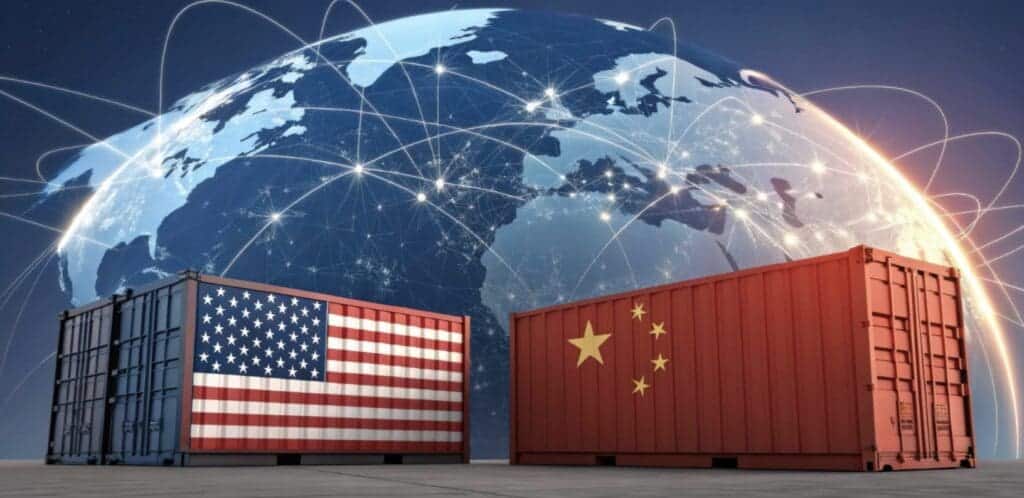
Technological Integration and Data Analytics
Revolutionizing Global Supply Chains: Embracing Automation and AI for Breakthrough Efficiency
In the voyage to redefine global supply chain efficiency, the compass points firmly towards the North Star of technology: automation and artificial intelligence (AI). In this era where the clock never stops and markets continuously demand faster, more streamlined operations, leveraging cutting-edge tech is not just a luxury but a crucial survival tactic for businesses looking to keep pace with an ever-evolving global economy.
Consider automation – simply put, it’s the game-changer. By having machines perform repetitive tasks, companies can significantly decrease human error and increase productivity. Picture robots in warehouses effortlessly picking and packing products, drones buzzing overhead delivering packages, and self-driving trucks navigating highways. These aren’t far-fetched sci-fi scenarios, but today’s reality is progressively seeping into the mainstream supply chain. The upshot? Accelerated operations and delivery times, slashing the hours or days traditionally necessary to move products.
Let that sink in for a moment: AI enters the stage, and the game rises to another stratosphere. Businesses wielding AI are the modern-day alchemists, turning oceans of data into gold – actionable insights. With algorithms churning tirelessly through market trends, consumer behaviors, and logistical performance, the optimization knobs can be fine-tuned almost in real-time. Predictive models built by AI can spotlight potential hiccups in the supply chain, enabling preemptive measures. This is about getting smart – allocating resources and anticipating market demands before they knock on the door.
Furthermore, AI’s machine learning component is transforming demand forecasting. By teaching computers to recognize and learn from patterns, forecasting becomes less about educated guesses and more a precise science. This means supply chains can be lean yet responsive, reducing overstocking costs while never missing a beat in meeting consumer demands.
Drilling down to logistics, integrating the Internet of Things (IoT) is propelling supply chain connectivity into a new dimension. With sensors and smart devices tracking goods throughout the supply chain and feeding data back in real-time, visibility is no longer obscured by a fog of uncertainty. Visibility breeds agility—the ability to monitor and manage the flow of products like a grand maestro, ensuring that the supply chain orchestra plays a symphony of efficiency.
While on the topic of orchestration, let’s not forget about blockchain technology. Often associated with digital currencies, its role in supply chains is setting the foundation for unshakeable trust. By creating a decentralized, transparent ledger of transactions, blockchain solidifies data integrity, curbing any concerns of tampering or inaccuracies. It’s about stitching an unbreakable fabric of trust across all supply chain layers, a pivotal thread in the complex global trade tapestry.
Looking ahead, embracing these technological advancements isn’t an option; it’s imperative for supply chain maestros seeking to compose the next masterpiece in operational excellence. The fusion of automation, AI, IoT, and blockchain isn’t just enhancing supply chain efficiency; it’s revolutionizing it. When supply chains get smarter, businesses don’t just survive; they thrive. This is the distinct hallmark of industry leaders – a relentless pursuit of innovation, an unwavering commitment to efficiency, and an audacious vision of what’s possible when technology and human ingenuity converge.
So, to the decision-makers, thought leaders, and trailblazers who orchestrate global supply chains: the future is technology, and it beckons with a promise of unprecedented efficiency and boundless potential. Embrace it, and steer your ships towards horizons that only the most visionary dare to navigate. The voyage is strategic; the seas are data-rich, and the compass—precision-guided by technology—points towards success.
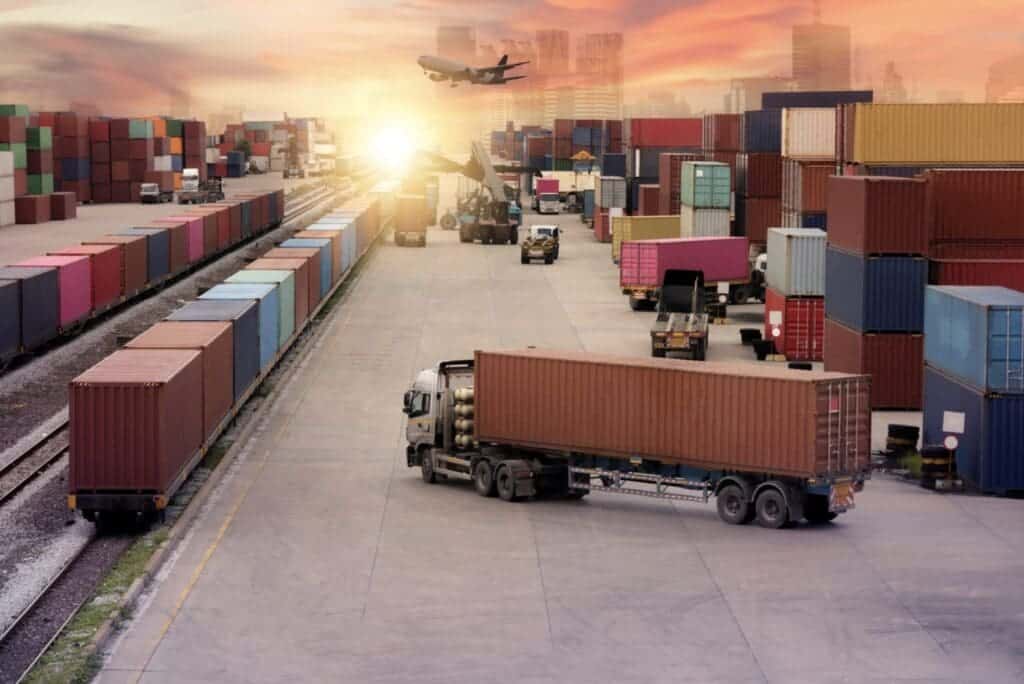
Sustainability and Ethical Practices
In today’s fast-paced and interconnected world, a spotlight is shining on sustainability and ethical practices within global supply chains. There’s a growing recognition that going green is not just a token of goodwill but a fundamental component of a robust, future-proof business strategy. As consumers become more conscious of their purchasing power and its impact on the planet, companies adapt their operations to meet the rising demand for ethically sourced and environmentally friendly products.
Embracing sustainability means going beyond the simple procurement of goods and services – it’s about incorporating eco-friendly materials from the get-go, adopting renewable energy sources, and reducing carbon footprints across the logistical network. It’s a holistic approach that requires forward-thinking and a willingness to invest in a greener future. Such an investment not only garners customer loyalty but pays dividends by cutting down on long-term operational costs associated with waste and inefficiency.
Yet, it’s crucial to understand that the quest for sustainability isn’t just a cost issue. It’s a complex balancing act involving supply chain resilience, social responsibility, and economic performance. Companies leading the charge in sustainable practices are not only looking at their bottom line but also the well-being of the workforce and communities involved in their supply chain. Implementing fair labor practices and ensuring safe working conditions demonstrate a commitment to human rights and foster a culture of respect and dignity – an attractive quality to consumers and business partners alike.
Furthermore, ethical practices call for vigilance against corruption and adherence to international standards, paving the way for transparency and accountability. By proactively combating unethical behaviors, companies enhance their reputation and minimize the risk of costly scandals and legal battles that can arise from non-compliance. It’s about doing business with integrity and securing the trust of stakeholders at every level.
A new era of supply chain management is emerging at the intersection of sustainability and technology. Innovators are utilizing advancements in clean tech and sustainable materials to comply with environmental regulations and set new benchmarks for eco-conscious manufacturing and transportation. These strategic moves lay the foundation for a supply chain that is responsive to today’s needs and adaptable to tomorrow’s challenges.
Sustainability and ethical practices are not optional extras today—they are essential components of a successful and resilient global supply chain. Companies integrating these principles into their operations are positioned to thrive amidst the evolving consumer expectations, regulatory requirements, and environmental stewardship landscape. Pursuing sustainable excellence is becoming the new standard; it’s a critical path that promising businesses are exploring and leading.
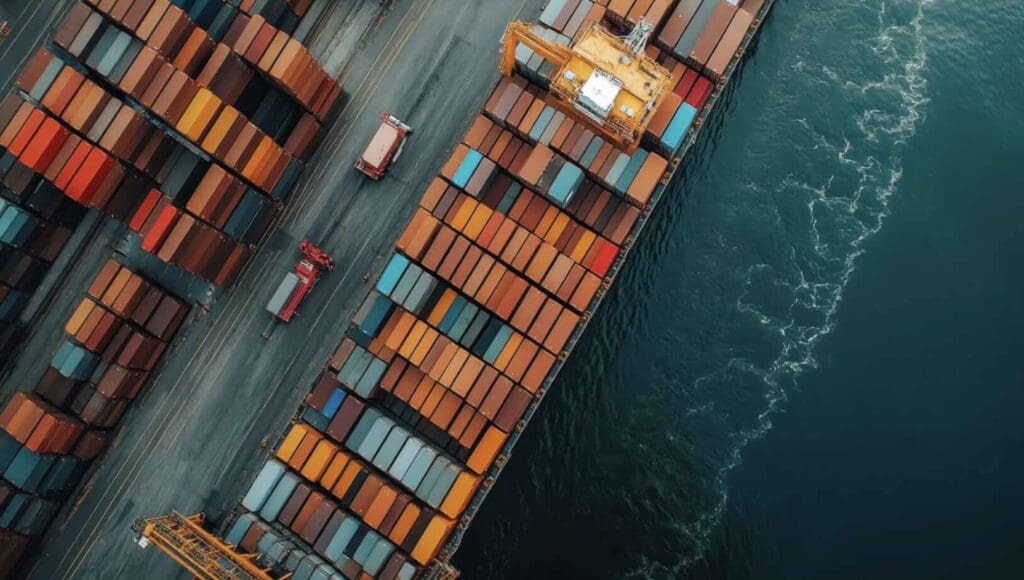
Cost Efficiency and Optimization
Optimizing Global Supply Chains: Dynamic Contracting and Lean Methodologies
The world and global supply chains are moving at a breakneck pace. Efficiency isn’t just a buzzword—it’s the very axle in the wheel of commerce that ensures your operation doesn’t just survive but thrives. The key? Embracing dynamic contracting and the magic of lean methodologies, among other things.
Let’s dive into the world of dynamic contracting. This approach to supplier agreements is not about set-in-stone terms but revolves around flexibility. Market volatility no longer has to spell disaster; by negotiating contracts that adapt to changing costs, demand, and circumstances, businesses can stay ahead of the game, enabling continuity and cost control. Imagine contracting that moves with the market ebb and flow—dynamic, just as it should be.
Flipping to another page, lean methodologies have revolutionized the way global supply chains operate. It’s about stripping down processes to their bare essentials and cutting out everything that doesn’t add value. By targeting waste and refining every stage, from procurement to product delivery, lean ensures everything is streamlined for maximum efficiency. It’s like turbocharging your supply chain to deliver more value with less—less time, less cost, and fewer resources.
Moreover, supplier performance metrics can robustly guide your supply chain journey. Scrutinize supplier interactions, measure performance, and foster a continuous improvement culture. This data-driven feedback loop can ensure high service levels while giving you leverage to negotiate better terms or pivot to alternative suppliers.
Quality management systems (QMS) are the scaffolding for a robust supply chain. They go beyond ensuring product or service quality; standout QMS zeroes in on process optimization, mitigating risks, and driving operational excellence. Integrating a solid QMS acts as a sentinel, guarding against defects and non-compliance while promoting a customer-centric approach to business strategy.
Cost efficiency and optimization are not merely objectives—they are imperatives for the supply chain connoisseur. Thriving in the global economy demands more than keeping pace; it requires a visionary approach that marries flexibility, leanness, and acute attention to quality. Embrace these strategies, and watch your global supply chain not just perform but excel.
In this realm, visibility isn’t just about watching the cogs turn; it’s about comprehending the entire machine. It’s the ability to see in real-time the who, what, when, and where of every element within the supply chain. This exquisite clairvoyance offers businesses a panoramic view of their operations, allowing them to pinpoint inefficiencies, anticipate bottlenecks, and leapfrog over potential pitfalls. It’s dashboards illuminating with data, digital twins mirroring complex systems and tracking technologies that keep tabs on products as they globe-trot from warehouses to doorsteps.
Peering into the looking glass of what’s to come isn’t just a parlor trick — it’s a strategic maneuver. Enhanced visibility bestows firms with the predictive prowess to adjust inventory levels, recalibrate shipping routes, and pivot production in response to the whims of the market. This is more than just keeping pace; it’s about setting the pace. As markets ebb and flow with the unpredictable tides of consumer demand, a lucid vision becomes the rudder steering businesses away from the rocky shoals of uncertainty.
Then there’s collaboration — the robust sinew connecting each supply chain node. But this isn’t your run-of-the-mill teamwork. Collaboration here means constructing a symphony from potential cacophony, uniting disparate entities — from suppliers to distributors — under one common goal: seamless execution. It’s a delicate dance of communication and mutual goals, bolstered by the connective tissue of state-of-the-art platforms where information flows as freely as conversation. This coordinated effort, in turn, yields a multiplier effect on the collective brainpower, resources, and problem-solving capabilities in the supply chain arena.
In an era where the sole certainty is the prevalence of uncertainty, collaboration evolves into an exercise in crafting symbiotic relationships that bolster resilience. Think of it as an insurance policy — a way to share the burden when volatility rears its head, knowing that an ally’s expertise can save the day. It’s about locking arms with those who understand their success is linked to yours. Collaborative networks don’t just anticipate tremors; they redistribute the shockwaves, ensuring that when one link wobbles, the others are poised to provide support.
Beyond the buzzwords, the emphasis on visibility and collaboration delineates a clear trajectory toward a future where supply chains aren’t merely surviving but thriving in the dynamic landscape of global commerce. Progressive enterprises already acknowledge that these aspects are non-negotiable — the essence of their strategic blueprint. A nod to the pairing of visibility and collaboration within supply chains isn’t just an acknowledgment of importance; it is an unequivocal embrace of the catalysts that will drive success in the unknown business terrains of tomorrow.
In conclusion, it behooves those at the helm of supply chain operations to recognize that the twin beacons of visibility and collaboration are not just fads but necessities. They are the vanguards of resilience, armored against the unpredictable future. As supply chains morph and the global stage shifts, these pillars will remain steadfast, guiding entities through the relentless tide of change.

The journey through global supply chain design layers outlines a tapestry of challenges and opportunities, with each thread interwoven with the others. By addressing disruptions with robust risk management, navigating regulatory mazes, leveraging cutting-edge technologies, committing to sustainability and ethics, seeking cost efficiency, optimizing operations, and fostering transparency and collaboration, companies can sculpt a supply chain that is not only the backbone of their operations but also a competitive differentiator in the market.
The essence of a well-orchestrated supply chain lies in its ability to be greater than the sum of its parts, ensuring that every piece contributes to a harmonious and dynamic business symphony.
Listen To Our Podcast About What Makes a Global Supply Chain Design Truly Efficient and Resilient?
Below or By clicking here.
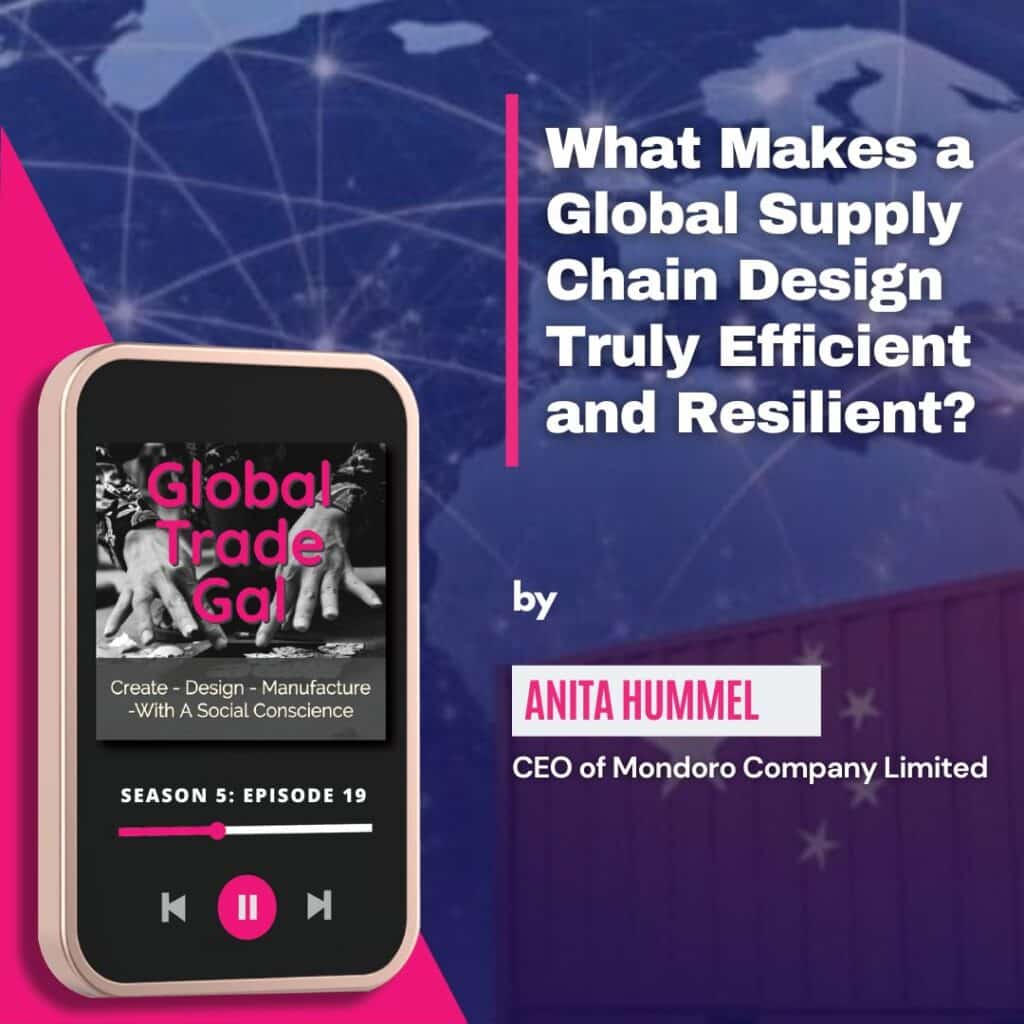
Find out more about how Mondoro can help you create, develop, and manufacture excellent home decor and furniture products – don’t hesitate to contact me, Anita. Check out my email by clicking here or become a part of our community and join our newsletter by clicking here.
Mondoro gives out a FREE Lookbook to anyone interested. You can receive a copy of our latest Lookbook by clicking here.
Listen to our Podcast called Global Trade Gal. You can find it on all major podcast platforms. Try out listening to one of our podcasts by clicking here.
Subscribe to our Mondoro Company Limited YouTube Channel with great videos and information by clicking here.
Related Content
Home Decor and Furniture Designs For The Perfect Entrance Hallway
Furniture, decorative mirrors, wall art, lamps, lighting, and home decor accessories are all great items to have in your entrance hallway. The hallway entrance space can help set the mood for your entire home, so it is a crucial design space to consider when decorating your home.
You can discover more by reading Home Decor and Furniture Designs For The Perfect Entrance Hallway by clicking here.
50 Amazing Quotes About Home Decor, Furniture, Decoration, And Interior Design
We love home decor and home furniture and anything to do with decoration. Because of this love, we find a lot of inspiration in home decor, furniture, decoration, and interior design quotes.
We have curated 50 of our favorite quotes about home decor, furniture, decoration, and interior design. We use these quotes to help inspire us at Mondoro with our work in the home decor and home furnishing field.
Click this link to learn more about 50 Amazing Quotes About Home Decor, Furniture, Decoration, And Interior Design.
What Is The Rattan Material Used In Home Decor Products?
Rattan is best described as a climbing palm that will scramble through a forest and grow overall vegetation. Rattan is an excellent material for home decor furniture and accessories as it is natural and strong but can also take a variety of stains and paints. Many steps must be taken to process rattan properly. Vietnam has a long history of rattan and bamboo production.
You can discover more by reading What Is The Rattan Material Used In Home Decor Products? by clicking here.

